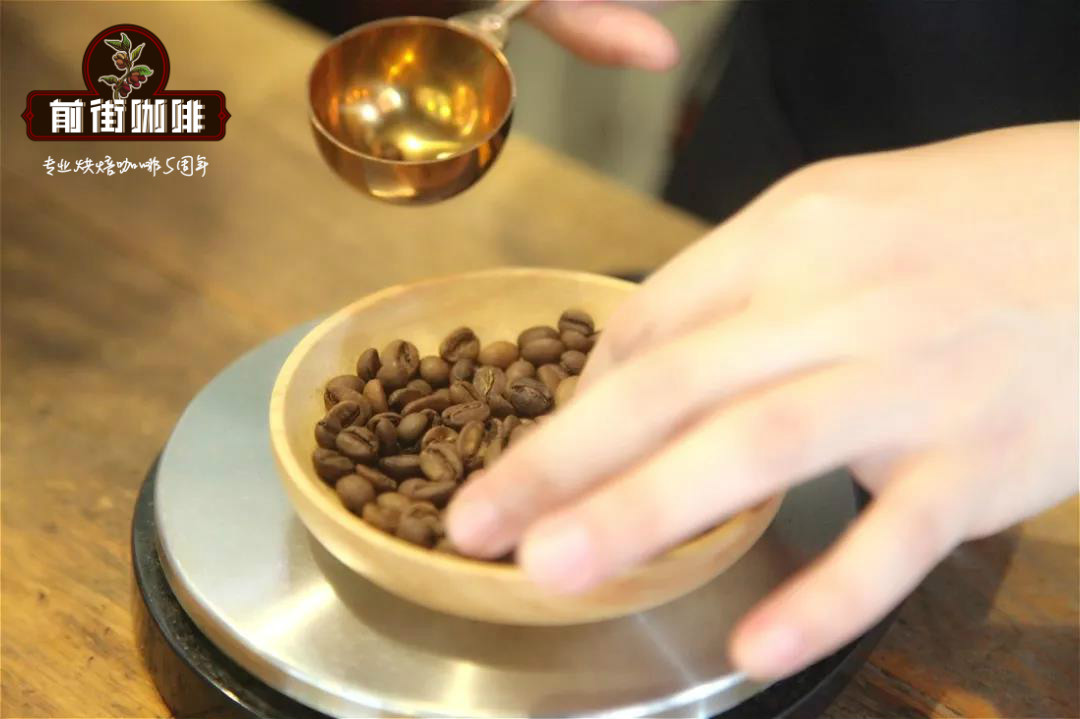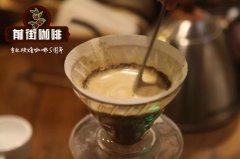Yemen Mocha Hirazi Region Ismaili Wild Mocha Coffee Bean Features Taste Origin

Professional coffee knowledge exchange more coffee bean information please follow the coffee workshop (Wechat official account cafe_style)
The Yemeni mocha Hirazi producing area according to the flavor of the wild coffee variety of Sima Ismaili?
The origin of wild coffee may be in Ethiopia (Ethiopia) in northeast Africa. It spread to Yemen in southern Arabia in the 15th century for artificial cultivation. Coffee was also popularized and cultivated in Egypt at the beginning of the 16th century. In 1607 ○, it was first introduced to Europe as Caf é de Moka. Mocha is the Yemeni export port Moka, known in Europe as the center for exporting coffee. Ismaili is the most traditional Yemeni coffee tree species, produced and planted in the Hirazi producing area of Ishima, located in the mountains of 6500-8000 feet above sea level. Coffee beans are still obtained in the same way as in ancient times. Wild coffee cherries grow naturally on trees and do not use any chemical fertilizers or pesticides during ripening. Coffee cherries naturally fall into the mud after drying on the trees. Directly dried by the sun on the mud, coffee farmers only bring coffee home from the ground and grind off the dried skin and pulp with a stone mill, which is the most primitive method of drying beans. Ismaili coffee beans in Yemen are still produced in this way, and there is a big gap in the size of Ismaili beans, which is different from her natural wild in steep rainfall and poor land. There is a connection on the narrow terraces where the sun is not enough, and it is such unique and difficult natural growth conditions that make her an irreplaceable position in the coffee world.
Yishi Mary is the most traditional coffee tree species. The Hirazi producing area of Yishi Mary is located in the mountains of 6500-8000 feet above sea level. The way of obtaining coffee is still the same as in ancient times. Wild coffee grows naturally and matures on the tree without using any fertilizers or pesticides. After drying on the tree, the coffee falls naturally and is dried by the sun directly in the mud. Coffee farmers just bring the coffee home from the ground. Grind off the dried peel and pulp with a stone mill, which is the most primitive method of drying beans. Yemen is still produced in this way. Ismaili has a large gap in bean size (there is a picture on the blog), which is related to her natural wild on narrow terraces with steep rainfall, poor ridges and insufficient sunlight, and it is precisely such unique and difficult natural growth conditions. To achieve her irreplaceable position in the coffee world.
Yemen is located in Asia, and its name comes from the Yemeni town of Mocha on the Red Sea. This place monopolized the export of coffee in the 15th century, especially in the Arabian Peninsula region. At that time, artificially grown mocha coffee in Yemen was exported to all parts of the world through the Yemeni port of Moka. Located in Asia across the Red Sea and Ethiopia in East Africa, Yemen is the highest quality producer of natural sun-dried coffee, including sun beans from nearby East Africa; in the early days, it was exported from the port of Mocha to all parts of the world, so the sun beans produced in Ethiopia, including Yemen and East Africa, are collectively referred to as mocha beans.
The natural sun treatment of Yemeni mocha coffee is to manually harvest fully mature coffee beans and directly place the newly harvested coffee beans in a special coffee drying field or in their own compacted soil front yard. During the sun drying, rice in Taiwan is usually turned with a wooden rake to keep each coffee bean evenly dried. After about 20 days of coffee drying, the outer pulp and peel are removed to remove the coffee beans.
Yemeni mocha coffee; it is round in shape and yellowish green. Generally planted in hilly slopes between 1200 and 2400 meters, the average temperature is 23 to 28 degrees Celsius, annual rainfall is 1500 to 1800 mm and dry season for two to three months. The unique difficulties of the dry season are not conducive to the growth of coffee, but give birth to the Yemeni mocha coffee that cannot be replaced by the coffee world.
Yemeni mocha coffee is rich in flavor, complex, wild, mellow, fermented and low in acidity, coupled with an uncertain factor (the timing of rain in the season). It is not too much to call her the most special coffee in the world. Yemeni mocha coffee is a kind of coffee full of variety and very good. After brewing, the aroma of fermented wine can be heard at high temperature. After the temperature drops, it begins to taste the changeable and complex taste. At low temperature, you can drink the acid and sweetness completely released from the coffee. The wild nature contained in it is displayed without regret.
In addition, Yemeni mocha coffee beans have a strong black chocolate flavor and aroma, so it is also a kind of "chocolate" coffee beans, which makes people associate coffee with chocolate, and gradually evolves into chocolate-flavored fancy coffee also known as "mocha". A typical example is espresso with milk and chocolate. The mixed coffee is called coffee Caffe Mocha.
The port of Mocha in Yemen was no longer a port for transporting coffee a long time ago because of sediment deposition, but it is still used as the name of coffee, it can be inferred that the port of Mocha in Yemen had worldwide influence at that time. Yemeni mocha coffee has the title of "Lady of the Coffee World" and is called the world's top three coffee with Blue Mountain Coffee of Jamaica and Kona of Hawaii.
Filter cup:
Water temperature: 90 degrees
Degree of grinding: small Fuji 3.5
Cooking methods: the ratio of water to powder is 1:15, 15g powder, the first injection of 25g water, 25 s steaming, the second injection to 120g water cut off, waiting for the powder bed water to half and then water injection, slow water injection until 225g water, extraction time about 2:00
Analysis: using three-stage brewing to clarify the flavor of the front, middle and back of the coffee. Because V60 has many ribs and the drainage speed is fast, it can prolong the extraction time when the water is cut off.
Related recommendation: what is mocha coffee? Yemeni mocha-Matali sun beans are the real mocha coffee beans in Yemen
Important Notice :
前街咖啡 FrontStreet Coffee has moved to new addredd:
FrontStreet Coffee Address: 315,Donghua East Road,GuangZhou
Tel:020 38364473
- Prev

Why are Yemeni coffee beans called mocha coffee? what does Yemeni mocha have to do with mocha?
Professional coffee knowledge exchange more coffee bean information Please pay attention to the coffee workshop (Wechat official account cafe_style) Yemeni mocha taste characteristics are more prominent, sour taste is obvious, it is easy to taste cocoa, the cocoa concentration emitted increases with the coffee concentration. Naturally, when making coffee, people will add hot cocoa to it.
- Next

Brief introduction of Mokasanni MokhaSan'ani producing area in Yemen list of producing areas of mocha coffee in Yemen
For more information on coffee beans, please follow the Coffee Workshop (official Wechat account cafe_style). Yemeni coffee is immediately reminiscent of the magical sun-dried beans that taste thick and full, and the fantastic wild aroma of fermented tea is stacked on stacks, full of mystery, elusiveness and infinite longing like the country of Yemen. Yemen is located in Ethiopia across the Red Sea and East Africa in Asia.
Related
- Detailed explanation of Jadeite planting Land in Panamanian Jadeite Manor introduction to the grading system of Jadeite competitive bidding, Red bid, Green bid and Rose Summer
- Story of Coffee planting in Brenka region of Costa Rica Stonehenge Manor anaerobic heavy honey treatment of flavor mouth
- What's on the barrel of Blue Mountain Coffee beans?
- Can American coffee also pull flowers? How to use hot American style to pull out a good-looking pattern?
- Can you make a cold extract with coffee beans? What is the right proportion for cold-extracted coffee formula?
- Indonesian PWN Gold Mandrine Coffee Origin Features Flavor How to Chong? Mandolin coffee is American.
- A brief introduction to the flavor characteristics of Brazilian yellow bourbon coffee beans
- What is the effect of different water quality on the flavor of cold-extracted coffee? What kind of water is best for brewing coffee?
- Why do you think of Rose Summer whenever you mention Panamanian coffee?
- Introduction to the characteristics of authentic blue mountain coffee bean producing areas? What is the CIB Coffee Authority in Jamaica?

